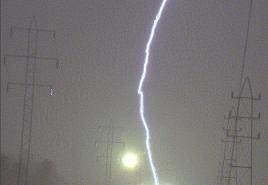Arms of the Milky Way title. The Milky Way consists of four spiral arms
The starry sky has attracted people's gaze since ancient times. The best minds of all nations tried to comprehend our place in the Universe, imagine and justify its structure. Scientific progress has made it possible to move in the study of the vast expanses of space from romantic and religious constructions to logically verified theories based on numerous factual materials. Now any schoolchild has an idea of what our Galaxy looks like according to the latest research, who, why and when gave it such a poetic name and what its expected future is.
origin of name
The expression “Milky Way Galaxy” is essentially a tautology. Galactikos roughly translated from ancient Greek means “milk”. This is what the inhabitants of the Peloponnese called the cluster of stars in the night sky, attributing its origin to the hot-tempered Hera: the goddess did not want to feed Hercules, the illegitimate son of Zeus, and in anger splashed breast milk. The drops formed a star trail, visible on clear nights. Centuries later, scientists discovered that the observed luminaries are only an insignificant part of existing celestial bodies. They gave the name Galaxy or the Milky Way system to the space of the Universe in which our planet is located. After confirming the assumption of the existence of other similar formations in space, the first term became universal for them.
A look from the inside
Scientific knowledge about the structure of the part of the Universe, including the Solar System, learned little from the ancient Greeks. Understanding of what our Galaxy looks like has evolved from Aristotle's spherical universe to modern theories that include black holes and dark matter.
The fact that Earth is part of the Milky Way system imposes certain limitations on those trying to figure out what shape our Galaxy has. To answer this question unambiguously, a view from the outside is required, and at a great distance from the object of observation. Now science is deprived of such an opportunity. A kind of substitute for an outside observer is the collection of data on the structure of the Galaxy and its correlation with the parameters of other space systems available for study.
The information collected allows us to say with confidence that our Galaxy has the shape of a disk with a thickening (bulge) in the middle and spiral arms diverging from the center. The latter contain the brightest stars in the system. The diameter of the disk is more than 100 thousand light years.

Structure
The center of the Galaxy is hidden by interstellar dust, making it difficult to study the system. Radio astronomy methods help to cope with the problem. Waves of a certain length easily overcome any obstacles and allow you to obtain the much desired image. Our Galaxy, according to the data obtained, has an inhomogeneous structure.
Conventionally, we can distinguish two elements connected with each other: the halo and the disk itself. The first subsystem has the following characteristics:
- the shape is a sphere;
- its center is considered to be a bulge;
- the highest concentration of stars in the halo is characteristic of its middle part; as you approach the edges, the density decreases greatly;
- The rotation of this zone of the galaxy is quite slow;
- the halo mainly contains old stars with relatively low mass;
- a significant space of the subsystem is filled with dark matter.
The density of stars in the galactic disk greatly exceeds the halo. In the sleeves there are young and even just emerging
Center and core
The “heart” of the Milky Way is located in Without studying it, it is difficult to fully understand what our Galaxy is like. The name "core" in scientific writings either refers only to the central region, only a few parsecs in diameter, or includes the bulge and gas ring, considered the birthplace of stars. In what follows, the first version of the term will be used.

Visible light has difficulty penetrating the center of the Milky Way because it encounters a lot of cosmic dust, hiding what our Galaxy looks like. Photos and images taken in the infrared range significantly expand astronomers' knowledge of the nucleus.

Data on the characteristics of radiation in the central part of the Galaxy led scientists to believe that there is a black hole at the core of the nucleus. Its mass is more than 2.5 million times the mass of the Sun. Around this object, according to researchers, another, but less impressive in its parameters, black hole rotates. Modern knowledge about the structural features of space suggests that such objects are located in the central part of most galaxies.
Light and darkness
The combined influence of black holes on the motion of stars makes its own adjustments to the way our Galaxy looks: it leads to specific changes in orbits that are not typical for cosmic bodies, for example, near the Solar system. The study of these trajectories and the relationship between the speed of movement and the distance from the center of the Galaxy formed the basis of the now actively developing theory of dark matter. Its nature is still shrouded in mystery. The presence of dark matter, which presumably makes up the vast majority of all matter in the Universe, is registered only by the effect of gravity on orbits.
If we dispel all the cosmic dust that hides the core from us, an amazing picture will be revealed. Despite the concentration of dark matter, this part of the Universe is full of light emitted by a huge number of stars. There are hundreds of times more of them per unit of space here than near the Sun. About ten billion of them form a galactic bar, also called a bar, of an unusual shape.
Space nut
Studying the center of the system in the long-wavelength range allowed us to obtain a detailed infrared image. Our Galaxy, as it turns out, has a structure at its core that resembles a peanut in a shell. This “nut” is the bridge, which includes more than 20 million red giants (bright, but less hot stars).

The spiral arms of the Milky Way radiate from the ends of the bar.
The work associated with the discovery of the “peanut” at the center of the star system not only shed light on the structure of our Galaxy, but also helped to understand how it developed. Initially, in the space of space there was an ordinary disk, in which a jumper formed over time. Under the influence of internal processes, the bar changed its shape and began to resemble a nut.
Our home on the space map
The activity occurs both in the bar and in the spiral arms that our Galaxy possesses. They were named after the constellations where sections of the branches were discovered: the arms of Perseus, Cygnus, Centaurus, Sagittarius and Orion. Near the latter (at a distance of at least 28 thousand light years from the core) is the Solar System. This area has certain characteristics that, according to experts, made possible the emergence of life on Earth.

The galaxy and our solar system rotate along with it. The patterns of movement of individual components do not coincide. stars are sometimes included in the spiral branches, sometimes separated from them. Only luminaries lying on the boundary of the corotation circle do not make such “travels”. These include the Sun, protected from powerful processes constantly occurring in the arms. Even a slight shift would negate all other benefits for the development of organisms on our planet.
The sky is in diamonds
The Sun is just one of many similar bodies that our Galaxy is full of. The total number of stars, single or grouped, according to the latest data, exceeds 400 billion. The closest to us, Proxima Centauri, is part of a system of three stars, along with the slightly more distant Alpha Centauri A and Alpha Centauri B. The brightest point of the night sky, Sirius A, is located in Its luminosity, according to various sources, exceeds the solar one by 17-23 times. Sirius is also not alone; he is accompanied by a satellite bearing a similar name, but marked B.
Children often begin to get acquainted with what our Galaxy looks like by searching the sky for the North Star or Alpha Ursa Minor. It owes its popularity to its position above the North Pole of the Earth. In terms of luminosity, Polaris is significantly higher than Sirius (almost two thousand times brighter than the Sun), but it cannot challenge Alpha Canis Majoris for the title of the brightest due to its distance from Earth (estimated from 300 to 465 light years).
Types of luminaries
Stars differ not only in luminosity and distance from the observer. Each is assigned a certain value (the corresponding parameter of the Sun is taken as a unit), the degree of surface heating, and color.
Supergiants have the most impressive sizes. Neutron stars have the highest concentration of matter per unit volume. The color characteristic is inextricably linked with temperature:
- reds are the coldest;
- heating the surface to 6,000º, like the Sun, gives rise to a yellow tint;
- white and blue luminaries have a temperature of more than 10,000º.
May vary and reach a maximum shortly before its collapse. Supernova explosions make a huge contribution to understanding what our Galaxy looks like. Photos of this process taken by telescopes are amazing.
The data collected on their basis helped to reconstruct the process that led to the outbreak and predict the fate of a number of cosmic bodies.

The future of the Milky Way
Our Galaxy and other galaxies are constantly in motion and interacting. Astronomers have found that the Milky Way has repeatedly absorbed its neighbors. Similar processes are expected in the future. Over time, it will include the Magellanic Cloud and a number of other dwarf systems. The most impressive event is expected in 3-5 billion years. This will be a collision with the only neighbor that is visible from Earth with the naked eye. As a result, the Milky Way will become an elliptical galaxy.
The endless expanses of space amaze the imagination. It is difficult for the average person to realize the scale of not only the Milky Way or the entire Universe, but even the Earth. However, thanks to the achievements of science, we can imagine at least approximately what kind of grandiose world we are part of.
A dwarf elliptical galaxy in the constellation Sagittarius may be responsible for the formation of the spiral arms of our galaxy. Scientists from the University of Pittsburgh came to this conclusion. Their work is published in the latest issue of the journal Nature.
The group was led by Christopher Purcell. Their numerical simulations were the first to propose such a scenario for the formation of spiral arms. "It gives us a new and rather surprising insight into why our galaxy looks the way it does," Purcell says.
“Cosmologically speaking, our calculations show that relatively small collisions like this can have major consequences in the formation of galaxies throughout the Universe,” he adds. “This idea was previously expressed theoretically, but has not yet been implemented.”
Most of the team of scientists are employees of the University of California at Irvine, where the Astrocomputing Center is located. Unfortunately, in the field of cosmology, numerical simulation using supercomputers is the only research method. The phenomena and objects being studied are so large and complex that there is no point in talking not only about analytical, but even about numerical methods on conventional machines. With the help of supercomputers, astronomers have the opportunity to recreate, at least on a small scale, cosmological phenomena occurring over billions of years and study these phenomena in an accelerated mode of their reproduction. Based on these simulations, assumptions are made that are then tested using actual observations.

In addition to the collision conclusion, Purcell's numerical simulations revealed an interesting feature of the dwarf galaxy's stars. All of them were surrounded by dark matter, the mass of which is approximately equal to the mass of all the stars in our galaxy.
It has long been known that real matter makes up less than 5% of the universe, while dark matter makes up about a quarter. Its existence is revealed only by gravitational interaction. Now we can say that all galaxies, including the Milky Way and the dwarf galaxy (before the collision) are surrounded by dark matter, and the region of space with it is several times larger than the galaxy in size and mass.
“When all this dark matter hit the Milky Way, 80 to 90 percent of it was reflected,” Purcell says. This first collision, which took place about two billion years ago, led to instabilities in the structure of our galaxy, which were then magnified, eventually leading to spiral arms and ring formations.
In his dissertation, Purcell focused on one more question: what did repeated collisions with a dwarf galaxy lead to?
For the past few decades, it has been generally accepted that the Milky Way has not been disturbed for the past few billion years. In this light, the spiral arms appeared as a logical result of the isolated evolution of the galaxy.
From the moment when a dwarf elliptical galaxy, a satellite of the Milky Way, was discovered in the constellation Sagittarius, astronomers began studying its debris. In 2003, supercomputer calculations of the galaxy's trajectory showed that it had previously collided with the Milky Way. The first time this happened 1.9 billion years ago, the second time - 0.9 billion years ago.

“But what happened to the Milky Way was not reproduced in the simulation,” says Purcell. “Our calculation was the first in which such an attempt was made.”
Scientists have discovered that the collision causes instability - fluctuations in stellar density - in the disk of the rotating Milky Way. The inner regions of our galaxy rotate faster than the outer regions, and this instability has been amplified, resulting in the formation of spiral arms.
In addition, the simulation revealed that due to the collision, ring structures were formed at the edges of our galaxy.
The second collision had less consequences. It also produced waves that led to the formation of spiral arms, but they were much less intense because the dwarf galaxy lost most of its dark matter during the first collision. Without dark matter to act as a container for the galaxy, its stars began to fall apart under the influence of the Milky Way's gravitational field.

“Galaxies like the Milky Way are constantly bombarded by dwarf galaxies. But until our study, it was not realized how important the consequences of such collisions could be, says Purcell. “We plan to find other results of the collision, for example, a glow in the outer regions of the disk of our galaxy. We expected to see changes in the Milky Way as a result of the collision, but we did not expect that it led to the formation of spiral arms. We didn't foresee this."
This was so unexpected that scientists delayed the publication of their discovery for several months in order to double-check everything. “We had to convince ourselves that we were sane,” adds Purcell.
Currently, streams of stars that once belonged to the dwarf galaxy are circling around the Milky Way. However, it did not completely collapse, and in a few million years a new collision will begin. “We can understand this by observing the center of the Milky Way. On the far side from us, stars fall onto the disk of the galaxy from below. We can measure the speed of these stars and can tell that the dwarf galaxy will soon hit the disk again, in just 10 million years."
> Milky Way
Milky Way– spiral galaxy with solar system: interesting facts, size, area, detection and name, study with video, structure, location.
The Milky Way is a spiral galaxy spanning an area of 100,000 light years in which the solar system is located.
If you have a place further away from the city, where it is dark and has a beautiful view of the starry sky, you may notice a faint streak of light. This is a group with millions of small bright lights and glowing halos. The stars are before you Milky Way galaxy.
But what is she? To begin with, the Milky Way is a barred spiral galaxy that is home to the Solar System. It is difficult to call the home galaxy something unique, because there are hundreds of billions of other galaxies in the Universe, many of which are similar.
Interesting facts about the Milky Way galaxy
- The Milky Way began forming as a cluster of dense regions after the Big Bang. The first stars to appear were in globular clusters, which continue to exist. These are the oldest stars in the galaxy;
- The galaxy increased its parameters due to absorption and merger with others. It is now taking stars from the Sagittarius Dwarf Galaxy and the Magellanic Clouds;
- The Milky Way moves through space with an acceleration of 550 km/s relative to the cosmic microwave background radiation;
- The supermassive black hole Sagittarius A* lurks at the galactic center. Its mass is 4.3 million times greater than that of the sun;
- Gas, dust and stars rotate around the center at a speed of 220 km/s. This is a stable indicator, implying the presence of a dark matter shell;
- In 5 billion years, a collision with the Andromeda Galaxy is expected. Some believe that the Milky Way is a giant spiral double system;
Discovering and naming the Milky Way galaxy
Our Milky Way galaxy has a rather interesting name, as the hazy haze resembles a trail of milk. The name has ancient roots and is translated from the Latin “Via Lactea”. This name appears already in the work “Tadhira” by Nasir ad-Din Tusi. He wrote: “Represented by many small and densely grouped stars. They are located close together, so they appear like spots. The color resembles milk...” Admire a photo of the Milky Way galaxy with its arms and center (of course, no one can take a photo of our galaxy, but there are similar designs and precise structural data that provide an idea of the appearance of the galactic center and arms).

Scientists thought the Milky Way was filled with stars, but this remained a guess until 1610. It was then that Galileo Galilei pointed the first telescope into the sky and saw individual stars. It also revealed a new truth to people: there are many more stars than we thought, and they are part of the Milky Way.
Immanuel Kant in 1755 believed that the Milky Way is a collection of stars united by a shared gravity. The gravitational force causes objects to spin and flatten into a disk shape. In 1785, William Herschel tried to recreate the galactic shape, but did not realize that most of it was hidden behind a haze of dust and gas.
The situation changes in the 1920s. Edwin Hubble managed to convince us that we do not see spiral nebulae, but individual galaxies. It was then that the opportunity arose to realize our form. From that moment it became clear that this was a barred spiral galaxy. Watch the video to explore the structure of the Milky Way galaxy and explore its globular clusters and find out how many stars live in the galaxy.
Our galaxy: a view from the inside
Astrophysicist Anatoly Zasov about the main components of our galaxy, the interstellar medium and globular clusters:
Location of the Milky Way Galaxy
The Milky Way in the sky is quickly recognized thanks to its wide and elongated white line, reminiscent of a milky trail. Interestingly, this star group has been visible since the formation of the planet. In fact, this area acts as the galactic center.
The galaxy extends 100,000 light years in diameter. If you were able to look at it from above, you would notice a bulge in the center, from which 4 large spiral arms emanate. This type represents 2/3 of the universe's galaxies.

Unlike the usual spiral, specimens with a jumper contain a rod in the center with two branches. Our galaxy has two main arms and two minor ones. Our system is located in the Orion Arm.
The Milky Way is not static and rotates in space, carrying all objects with it. The solar system moves around the galactic center at a speed of 828,000 km/h. But the galaxy is incredibly huge, so one passage takes 230 million years.
Spiral arms accumulate a lot of dust and gas, creating excellent conditions for the formation of new stars. The arms extend from the galactic disk, spanning approximately 1,000 light years.
At the center of the Milky Way you can see a bulge filled with dust, stars and gas. This is why you only get to see a small percentage of the total number of stars in the galaxy. It's all about the thick gas and dust haze that blocks the view.

In the very center lies a supermassive black hole, billions of times more massive than the Sun. Most likely, it used to be much smaller, but a regular diet of dust and gas allowed it to grow. This is an incredible glutton, because sometimes even stars are sucked in. Of course, it is impossible to see it directly, but the gravitational influence is monitored.
Around the galaxy is a halo of hot gas, where old stars and globular clusters live. It extends over hundreds of thousands of light years, but contains only 2% of the stars that are in the disk. Let's not forget about dark matter (90% of the galactic mass).
Structure and composition of the Milky Way galaxy
When observed, it is clear that the Milky Way divides the celestial space into two almost identical hemispheres. This suggests that our system is located near the galactic plane. It is noticeable that the galaxy has a low level of surface brightness due to the fact that gas and dust are concentrated in the disk. This not only makes it impossible to see the galactic center, but also to understand what is hiding on the other side. You can easily spot the center of the Milky Way galaxy in the diagram below.

If you were able to escape beyond the Milky Way and get a top-down perspective, you would see a spiral with a bar. It extends over 120,000 light years and is 1000 light years wide. For many years, scientists thought they saw 4 arms, but there are only two of them: Scutum-Centauri and Sagittarius.
The arms are created by dense waves rotating around the galaxy. They move around the area, so they compress dust and gas. This process triggers the active birth of stars. This happens in all galaxies of this type.
If you have come across photos of the Milky Way, then they are all artistic interpretations or other similar galaxies. It was difficult for us to comprehend its appearance, since we are located inside. Imagine that you want to describe the outside of a house if you have never left its walls. But you can always look out the window and look at the neighboring buildings. In the bottom picture you can easily understand where the Solar System is located in the Milky Way galaxy.

Ground and space missions have revealed that the galaxy is home to 100-400 billion stars. Each of them can have one planet, that is, the Milky Way galaxy is capable of housing hundreds of billions of planets, 17 billion of which are similar in size and mass to Earth.
Approximately 90% of the galactic mass goes to dark matter. No one can explain what we are facing. In principle, it has not yet been seen, but we know about its presence thanks to the rapid galactic rotation and other influences. It is this that keeps galaxies from being destroyed during rotation. Watch the video to learn more about the stars of the Milky Way.
Stellar population of the galaxy
Astronomer Alexey Rastorguev on the age of stars, star clusters and properties of the galactic disk:
Position of the Sun in the Milky Way Galaxy
Between the two main arms is the Orion Arm, in which our system is located 27,000 light-years from the center. There is no point in complaining about the remoteness, because a supermassive black hole (Sagittarius A*) lurks in the central part.

It takes our star, the Sun, 240 million years to orbit the galaxy (a cosmic year). This sounds incredible, because the last time the Sun was in this area, dinosaurs roamed the Earth. During its entire existence, the star made approximately 18-20 flybys. That is, it was born 18.4 space years ago, and the age of the galaxy is 61 space years.
Collision trajectory of the Milky Way galaxy
The Milky Way not only rotates, but also moves in the Universe itself. And although the space is large, no one is immune from collisions.

It is estimated that in about 4 billion years, our Milky Way galaxy will collide with the Andromeda galaxy. They are approaching at a speed of 112 km/s. After the collision, the process of star birth is activated. Overall, Andromeda is not the neatest racer, as it has crashed into other galaxies in the past (noticeably large dust ring in the center).

But earthlings should not worry about the future event. After all, by that time the Sun will already explode and destroy our planet.
What's next for the Milky Way galaxy?
It is believed that the Milky Way was created by the merger of smaller galaxies. This process continues, as the Andromeda galaxy is already rushing towards us to create a giant ellipse in 3-4 billion years.

The Milky Way and Andromeda do not exist in isolation, but are part of the Local Group, which is also part of the Virgo Supercluster. This gigantic region (110 million light years) is home to 100 groups and galaxy clusters.
If you haven’t been able to admire your native galaxy, then do it as soon as possible. Find a quiet and dark place with an open sky and just enjoy this amazing star collection. Let us remind you that the site has a virtual 3D model of the Milky Way galaxy, which allows you to study all the stars, clusters, nebulae and known planets online. And our star map will help you find all these celestial bodies in the sky yourself if you decide to buy a telescope.
Position and movement of the Milky Way
A biased and scrupulous analysis of the influence of the rotation curve of the Milky Way galaxy on the shape of its arms leads to unexpected conclusions. If the galaxy moved with such a rotation curve, then just two revolutions ago - about 600 million years - its arms were “twisted” in the opposite direction. And, on the contrary, over the next few revolutions it should completely lose its sleeves, which will curl tightly, evenly filling its entire disk. Considering that the age of the galaxy is supposed to be about tens of billions of years, its past looks even more mysterious - the emergence of the arms cannot be explained by purely kinematic contradictions.
It turns out that hypothesis a about dark matter not only does not eliminate the contradictions in the observed rotation curve of our galaxy itself, but, on the contrary, creates new ones.
It is possible that the observed, calculated rotation curve of the galaxy is unstable and does not reflect the long-term evolution of the Milky Way. The measured velocities of stars correspond to the current moment in time and, apparently, say little about their past or future values. Perhaps it is possible to talk about the dynamics of their movement only with a certain degree of reliability. Otherwise, the laws of mechanics give this natural logical result.
It is logical to assume that a different long-term shape of the rotation curve is possible, which over many billions of years allowed the arms of the Milky Way to take the shape that has now become possible to calculate from astronomical observations. But in this case, a logical question arises: what was the galaxy like “at the beginning of its journey”? And “when it began, it began”?
Let's make the assumption that the galaxy was formed, say, 3 billion years ago. This period was taken for utilitarian reasons: to make it easier to view the evolution in animation. And the arms could have arisen, for example, as a result of the collapse of two black holes, which ejected their jets in different directions. While rotating, these jets, so to speak, “swept” the surrounding space, collecting gas and stars. Gradually the sleeves curled into their current shape. Why are there two black holes? Because there are four arms, and the jets are formed in pairs.
Astronomers debate whether our galaxy exhibits two or four spiral arms. They often lean towards the four-arm option, but relatively recent observations from NASA's Spitzer Telescope suggest another possibility, that our galaxy has two arms. In 2013, astronomers mapped star-forming regions and claimed to have found the two missing arms, bringing the total number of arms back to four.
Over time, the evidence for the Milky Way's four arms only grew stronger. A team of Brazilian astronomers used star clusters embedded in their natal clouds to trace the structure of the galaxy. “Our results support the version of four spiral arms of the galaxy, including the Sagittarius, Perseus and outer arms,” noted the team from the Federal University of Rio Grande do Sul.
“Despite efforts to improve our understanding of galactic structure, questions remain. There is no consensus on the number and shape of the galaxy's spiral arms,” said lead author D. Camargo. He added that the Sun's location in the darkened galactic disk was a major factor hampering our understanding of the Milky Way's broad structure. In other words, we do not reach the bird's eye view of our Galaxy.
The team observed that young embedded clusters are excellent tracers of galaxy structure. “The present results show that embedded galaxy clusters are predominantly found in spiral arms.” They noted that star formation can occur after the breakup and fragmentation of giant molecular clouds found in spiral arms and, therefore, young embedded star clusters that emerge afterwards become excellent probes of galactic structure since they do not travel far from their birthplace.
The team used data from NASA's WISE infrared telescope to identify young clusters still embedded in their natal clouds, often enveloped in significant amounts of dust. Infrared starlight is less obscured by dust than visible light, giving astronomers an unprecedented view. In fact, the team discovered 7 new embedded clusters, some of which (named Camargo 441-444) may belong to a larger assemblage located in the Perseus Arm. They suggested that a giant molecular cloud was being compressed by a spiral arm, which may have caused the formation of stars in several clumps, and the emergence of numerous star clusters with similar ages.
“The embedded clusters in this sample are distributed along the Sagittarius, Perseus, and outer arms,” the team concluded. She also noted that the search for new embedded clusters throughout the galaxy should not stop, as such indicators can contribute to our understanding of the structure of the galaxy.







